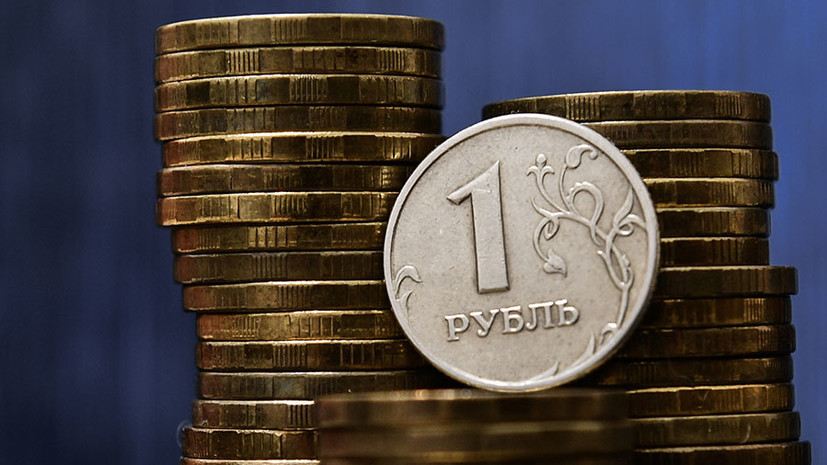In December, the Russian currency rose significantly on the Moscow Exchange. Since the beginning of the month, the US dollar has weakened by almost 2.8%, and the euro - by 2%.
On Tuesday, December 17, the US dollar and the euro are trading near 62.5 and 69.8 rubles, respectively. At the same time, December 13, indicators fell to their lowest levels since mid-2018 - 62.1 and 69.5 rubles.
It is curious that usually in December the Russian currency becomes cheaper due to seasonal factors. According to RT, the head of the CAFT analyst group Mark Goikhman, traditionally before the New Year in Russia, the demand for foreign currency is increasing.
However, RT experts surveyed associate the current appreciation of the ruble with a sharp change in the sentiment of the currency market players. Investors reacted positively to the warming in the trade war between the US and China.
Recall that in the fall, Washington and Beijing again intensified negotiations to conclude a trade agreement and end the tariff war. US President Donald Trump announced the possibility of signing the first part of the agreement in the near future, but at the same time threatened China with a new increase in duties in the event of another failure of the transaction. The restrictions were supposed to enter into force on December 15, but in the end this did not happen.
As the US trade representative Robert Lighthizer said, the American president has decided to abandon the increase in duties. At the same time, Donald Trump himself on December 17 announced the possible coordination of the first stage of the transaction “within a couple of weeks”. It is reported by TASS.
Traditionally, during the reduction of geopolitical tensions in the world, investors begin to actively purchase risky assets. As a result, improved trade relations between the States and China had a positive effect on the ruble. About this in an interview with RT told the deputy head of the information and analytical center "Alpari" Natalia Milchakova.
“When the markets learned that the US and China refuse to raise mutual duties from December 15 and are preparing to sign the first stage of a trade deal, all risky assets began to grow. First of all, these are contracts for the purchase of raw materials, stocks and currencies of developing countries. This situation in the global financial markets is also of great importance for the ruble, ”Milchakova explained.
According to analysts, to a certain extent, the Russian currency was supported by a marked increase in world oil prices. To date, the raw materials of the Brent benchmark have been trading at maximum levels since September - $ 65.5 per barrel.
“Following the decision of the OPEC + member countries to further reduce oil production and successfully enter the Saudi Aramco exchange, rising oil prices above $ 65 per barrel supported the ruble,” said Alexander Bakhtin, investment strategist at BCS Premier, RT.
However, the influence of commodity quotes on the ruble is limited by the budget rule, which stipulates that during the rise in oil prices, the Ministry of Finance buys foreign currency and thereby puts pressure on the ruble. Moreover, in the event of a collapse in the energy market, the ministry ceases operations - and pressure on the ruble weakens. As a result of such actions, the dependence of the national currency on oil prices is reduced.
Recently, the effect of the fiscal rule has already weakened the relationship between the ruble and oil, but currency market players still sometimes react to sharp changes in commodity prices.
“The budget rule reduced the influence of the price dynamics of the oil market on the ruble exchange rate, but did not completely eliminate the dependence. In 2019, the main factor in the strengthening of the ruble was not oil, but the inflow of foreign capital. Russia has a uniquely strong macroeconomic foundation, which attracts foreign investors to Russian assets. But this basis is also enhanced by the comfortable state of oil prices, ”Bakhtin added.
First of all, experts point to a record inflow of money into Russian debt securities. According to the Central Bank, since the beginning of 2019, the total volume of the federal loan bond market (OFZ) has increased by almost 1.53 trillion rubles and for the first time since the observation amounted to 8.86 trillion. At the same time, the amount of foreign investments increased by more than 1 trillion rubles and also reached a historic maximum of 2.84 trillion. In general, foreign investors account for almost a third (32%) of all OFZ purchases.
The interest of foreign investors in ruble assets had a positive effect on the Russian stock market. At the auction on December 17, the Mosbirzhi index added 0.4% and for the first time reached the level of 3019 points. According to the forecast of Natalia Milchakova, by the end of the year, the indicator can still additionally grow to 3040 points. In this case, the dollar exchange rate will remain in the range of 62–64.5 rubles, while the euro rate will remain near 69–72 rubles.

